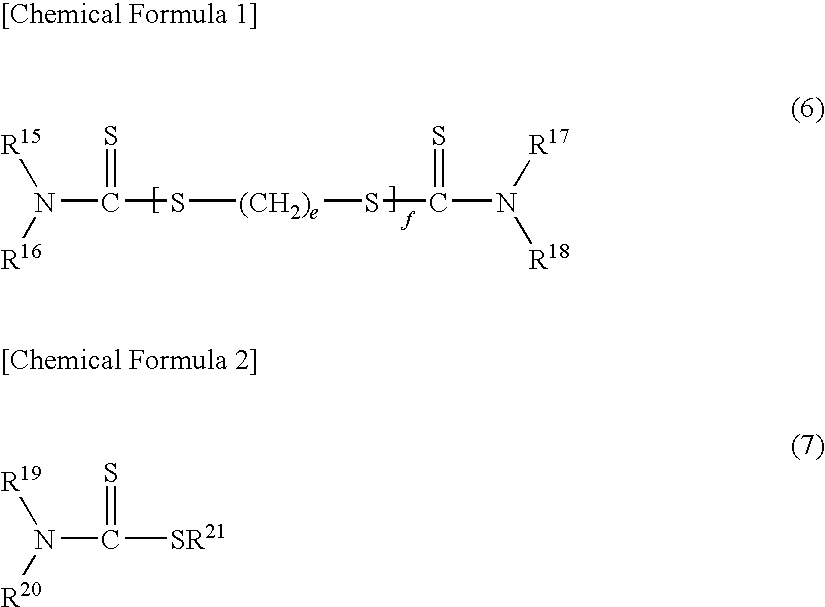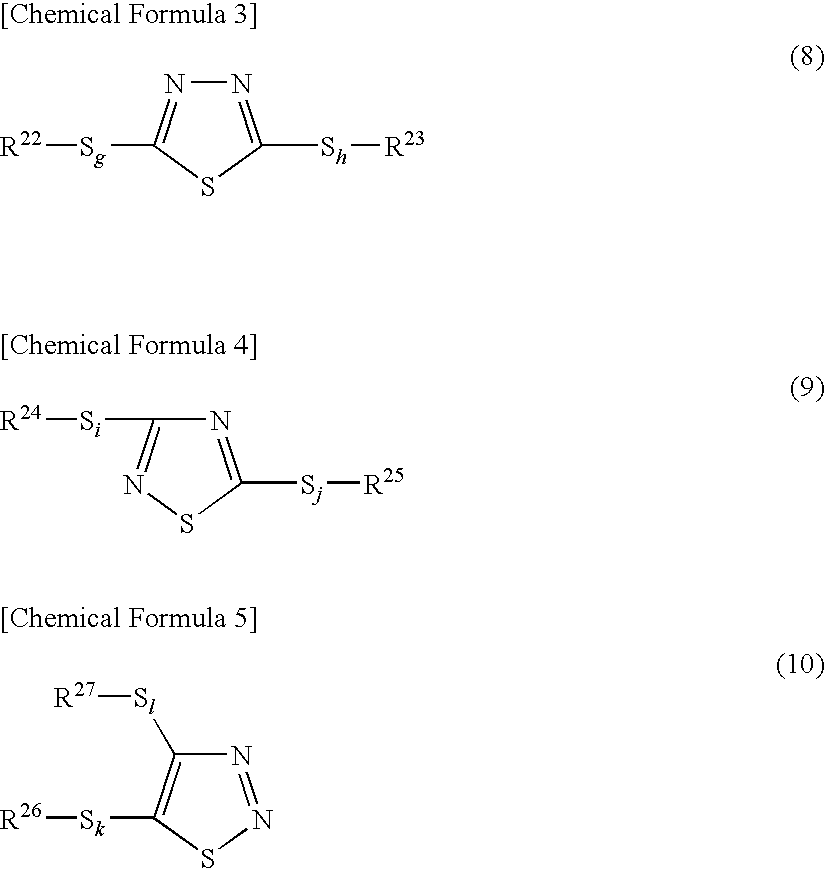Lube Base Oil, Lubricating Oil Composition For Internal Combustion Engine, And Lubricating Oil Composition For Drive Transmissoin Device
- Summary
- Abstract
- Description
- Claims
- Application Information
AI Technical Summary
Benefits of technology
Problems solved by technology
Method used
Image
Examples
examples
[0408]The present invention will now be explained in greater detail based on examples and comparative examples, with the understanding that these examples are in no way limitative on the invention.
examples 1-3
[0409]The fraction separated by vacuum distillation in a process for refining of a solvent refined base oil was subjected to solvent extraction with furfural and then hydrotreatment, which was followed by solvent dewaxing with a methyl ethyl ketone-toluene mixed solvent. The wax portion obtained by further deoiling of slack wax removed during the solvent dewaxing (hereunder, “WAX1”) was used as feedstock oil for the lubricating base oil. The properties of WAX1 are shown in Table 1.
TABLE 1Name of crude waxWAX1kinematic viscosity at 100° C.6.3(mm2 / s)Melting point (° C.)53Oil content (% by mass)19.9Sulfur content (ppm by mass)1900
[0410]WAX1 was hydrocracked in the presence of a hydrocracking catalyst, under conditions with a hydrogen partial pressure of 5 MPa, a mean reaction temperature of 350° C. and a LHSV of 1 hr−1. The hydrocracking catalyst was used as the sulfidized form of a catalyst comprising 3% by mass nickel and 15% by mass molybdenum supported on an amorphous silica-alumin...
examples 10 and 11
, Comparative Examples 10-16
[0414]For Examples 10 and 11 there were prepared lubricating oil compositions for an internal combustion engine having the compositions shown in Table 8, using base oil D4 of Example 4 and the base oils and additives listed below. For Comparative Examples 10-13 there were prepared lubricating oil compositions for an internal combustion engine having the compositions shown in Table 9, using the base oils and additives listed below. For Comparative Examples 14-16 there were prepared lubricating oil compositions for an internal combustion engine having the compositions shown in Table 10, using base oil 1 and the base oils and additives listed below. The sulfur contents, phosphorus contents, kinematic viscosities at 100° C., base numbers and acid values of the obtained lubricating oil compositions are shown in Tables 3-5. (Base oils)[0415]R10: Paraffinic hydrocracked base oil (saturated components content: 94.8% by mass, proportion of cyclic saturated compone...
PUM
| Property | Measurement | Unit |
|---|---|---|
| Temperature | aaaaa | aaaaa |
| Percent by mass | aaaaa | aaaaa |
| Percent by mass | aaaaa | aaaaa |
Abstract
Description
Claims
Application Information
 Login to View More
Login to View More - R&D
- Intellectual Property
- Life Sciences
- Materials
- Tech Scout
- Unparalleled Data Quality
- Higher Quality Content
- 60% Fewer Hallucinations
Browse by: Latest US Patents, China's latest patents, Technical Efficacy Thesaurus, Application Domain, Technology Topic, Popular Technical Reports.
© 2025 PatSnap. All rights reserved.Legal|Privacy policy|Modern Slavery Act Transparency Statement|Sitemap|About US| Contact US: help@patsnap.com



